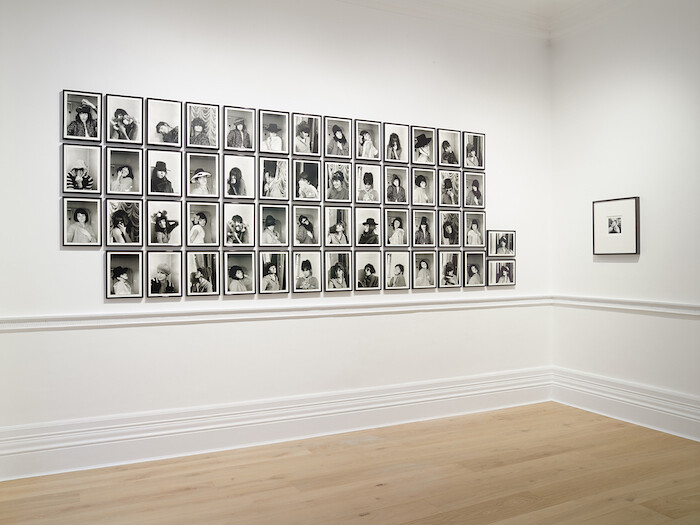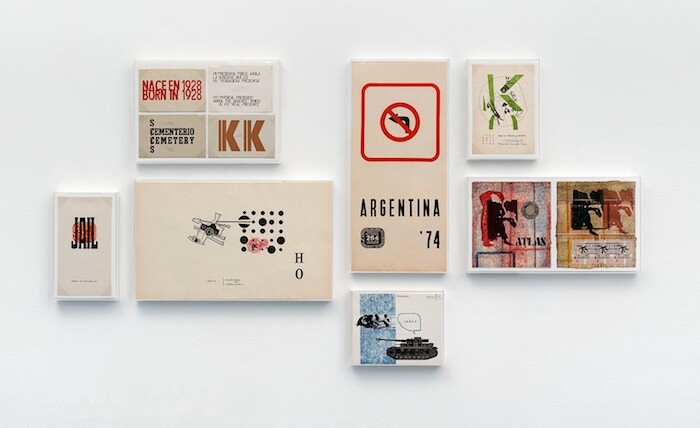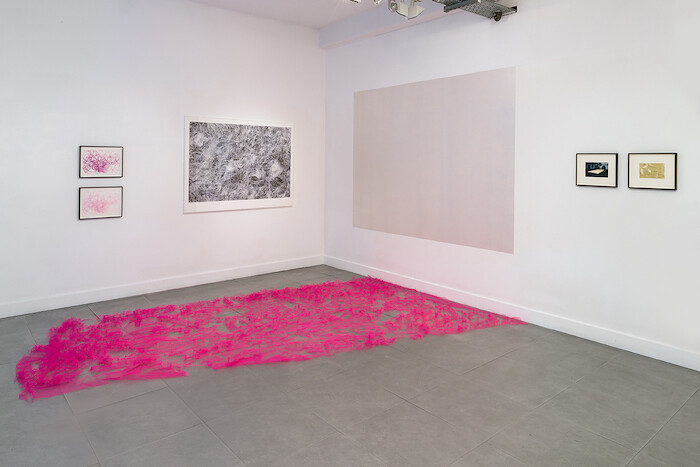Categories
Subjects
Authors
Artists
Venues
Locations
Calendar
Filter
Done
March 29, 2018 – Review
"Women Look at Women"
Lucy Reynolds

I almost walk past the entrance to “Women Look at Women,” the inaugural exhibition at Richard Saltoun’s new space on London’s New Bond Street, delayed and disorientated by the glossy rows of designer shops and galleries that surround it. Catherine—a friend on a break from the picket line where she, like many UK university lecturers, is fighting to keep her pension rights—is already there, taking succor from women’s images of themselves and each other. “I was just looking at this,” she says, pointing to Marie Yates’s photographic installation The Missing Woman (1982–84). Catherine’s gesture encompasses a wall of irregularly spaced photomontages: a mixture of grainy, hand-tinted images, polaroids, photocopies, and text rendered in Courier typeface and neat handwriting. One image—a color photograph of a telephone receiver and a telegram overlaying that of a roadside in blurred black and white—is accompanied by the line “Somewhere there is a point of certainty.” It holds out an unattainable promise of clarity in the game of decipherment and elusive autobiographical disclosure which Yates’s images put into play.
The Missing Woman speaks of a time—broadly stretching from the 1960s to the mid-1980s—when women’s images were troubled and interrogated by a newly confident feminist articulation, finding its …
May 22, 2017 – Review
Edgardo Antonio Vigo’s “Un Arte A Realizar [An Art In Becoming]”
Gustavo Grandal Montero

“Un Arte A Realizar [An Art In Becoming]” is the first solo exhibition in the UK dedicated to the Argentinian artist Edgardo Antonio Vigo, who died in 1997. Relatively unknown in Europe, his name has until recently been associated with mail art, that most underrated of avant-garde movements. The exhibition presents a small selection of around 30 works, mostly on paper, from the late 1950s to the ’90s, part of a much larger collection recently acquired by the gallery from the Sackner Archive of Concrete and Visual Poetry in Miami.
Vigo’s early work comprises concrete poetry, represented here by two 1958 prints (R and Composición mecánico-estética), and neo-dada objects, which he defined as useless and impossible machines. (Photographs documenting two of these are on display.) He edited the artists’ magazine Diagonal Cero, which featured visual and concrete poetry from Argentina and beyond, and in 1969 organized the international exhibition of concrete poetry “Expo Internacional Novísima Poesía/69” in Buenos Aires. Between 1971 and 1975 he published Hexágono ’71, a magazine that included contributions from a wide range of international artists. Although these publications are poorly represented in the exhibition—with just two issues of Diagonal Cero—they are central to Vigo’s practice, and their …
May 11, 2016 – Review
Shelagh Wakely’s “Spaces Between Things”
Patrick Langley

Shelagh Wakely’s Papillon de Nuit (1993)—modestly framed on the white wall of a metal-floored room at Richard Saltoun Gallery—is a collage assembled from photographic documentation of an installation of the same name, in which a video monitor showing a restless, fluttering moth was placed on a glass table, surrounded by gilded fruits. These ornate forms decayed over the course of the exhibition, rotting, collapsing, oozing, evaporating, until all that remained of them—“fresh and ripe at the start of the exhibition,” the artist notes in scribbled pencil in the top-right corner of the collage—was their gold-plated skins, crinkled husks of moldy opulence that had become “overripe and smelly.” As a moth must emerge from a pupa, a shell of organic matter, to complete the transition from larva to adult insect, so must a fruit rot from the inside, and burst the limitations of its decorative skin, before the installation’s effects are complete: in both cases, organic forms are presented as discardable containers for something ephemeral, fleeting, airborne—an insect and an odor of rot. Less important than the material substance of Wakely’s sculptures and installations are the transitions inherent in their composition and, ultimately, decomposition.
Wakely, who died in 2011, aged 78, was …
